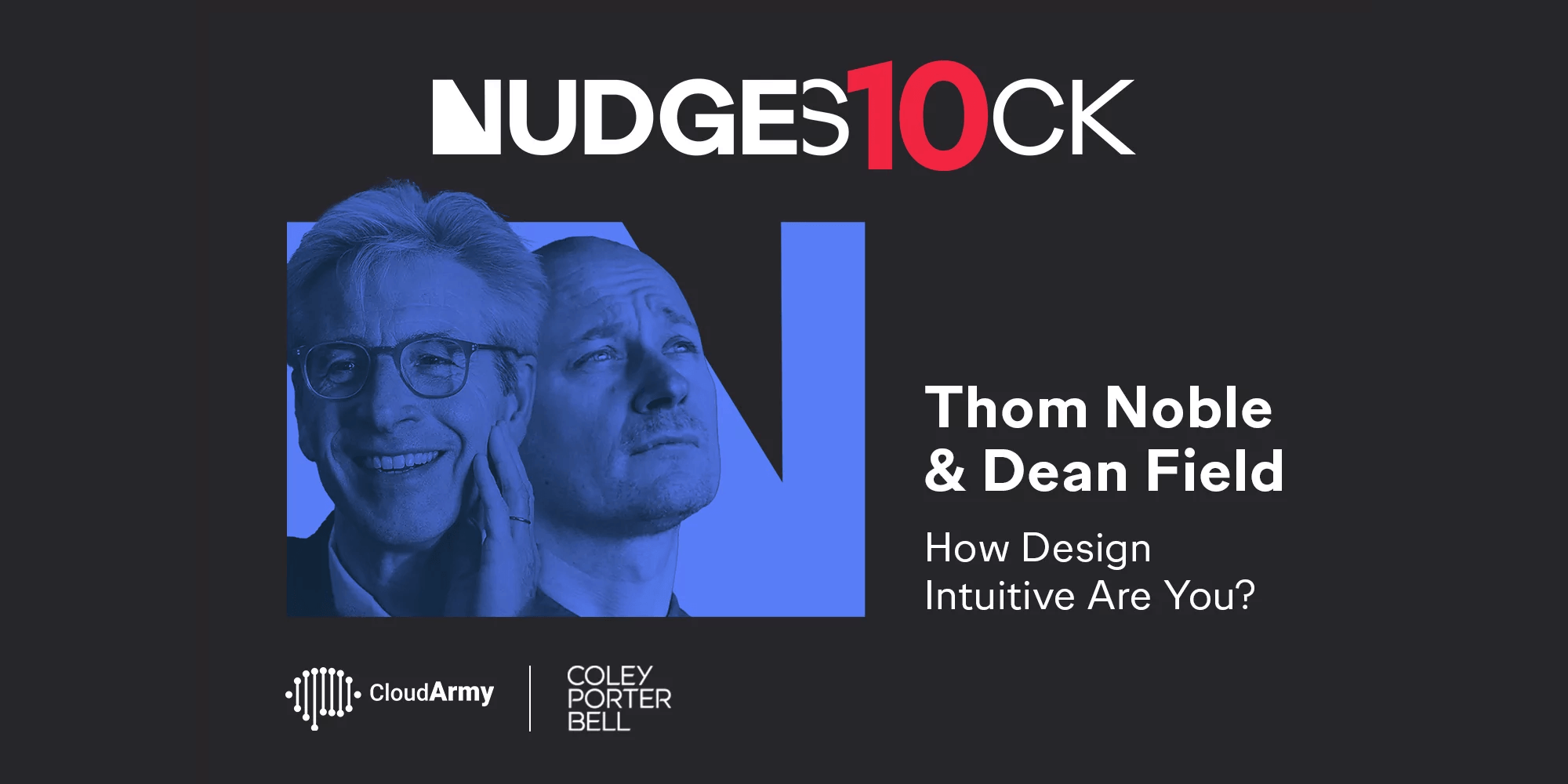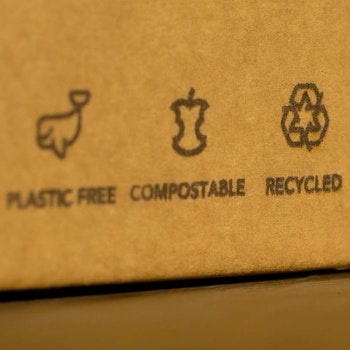
Following their Nudgestock sessions, Dean Field of Coley Porter Bell, Ogilvy’s branding and design agency, together with Thom Noble from neuro-testing specialists, CloudArmy, will be sharing more insights into intuitive neuro-design best practises in a forthcoming podcast, loaded with hot tips on how to induce more effective results.
Both share a philosophy that blending science and creativity delivers more compelling and effective in-market solutions. Both believe there’s more to effectiveness than creativity alone; and that mind-science can help augment creative intuition. Dean Field, comments: “Our Immersive Branding approach seeks to first uncover what’s really driving existing implicit-level motivations and behaviours, and then explore what’s important for devising the most compelling solutions. By analysing how the mind makes mental shortcuts and acts intuitively, we are in a better position to then explore how to cue perceptions and behaviours at this ‘autopilot’ level”. Thom Noble adds, “Yes, this chimes really nicely with our own CloudArmy view of why testing design outputs at the deeper level is so important. If creative solutions are inspired to work at the system 1 level, they are best measured at that same level.
But how do we find out what people really think and feel? Isn’t it enough to simply ask them through traditional research? In short, no! What brain science is now teaching marketers confirms what intuitive creatives have thought for years: that traditional surveys and focus groups are over-rationalised and cannot fully reveal the pervasive influence of our non-conscious minds. We now know enough about how Attention is grabbed, Perception shaped, and Behaviour triggered to figure out that new methods are required to get deeper reads.
David Ogilvy recognised the Say-Do gap decades ago: “Consumers don’t think how they feel, don’t say what they think and don’t do what they say!”.
Now, we are beginning to understand a lot more from science about why this is. And about the reality that the powerful forces that guide our attitudes and behaviours are largely driven by our non-conscious and emotional impulses. To measure these impulses, we need a fresh set of implicit research tools that can go beyond the filtered, and unavoidably rationalised claims from traditional methods. It may seem strange at first to think that science and creativity could be so complementary, but those who already use science-led techniques to measure and optimise emotional and creative topics, are seeing the benefits. Some talk of a sense of ‘creative liberation’ i.e., how a mind-science understanding of design-response triggers, can not only overcome the Say-Do gap but also inspire all kinds of fresh, new and bolder ideas.
We believe the Say-Do gap is increasing- driven by the social, cultural forces and ever more pressures on ‘can’t say / won’t say’ in surveys and focus groups. This in turn provides more reasons for adopting implicit-based methods that can expose hidden feelings and beliefs.
But how do timed-response methods work? There is a wide selection of different tools but at the core are an array of implicit or intuitive association tests. A fundamental tenet of neuropsychology supports the view that there is a close relationship between the speed with which something comes to mind, and the strength of that association. These online implicit association tests use time-response paradigms to capture in milliseconds the relative strength of connection of one thing to another e.g., the degree to which a specific colour will evoke a series of feelings, values, benefits, product characteristics, usage occasions and so on. This allows mapping and tracking of hierarchies or networks of associations stored in memory e.g., of brand experiences and brand identity as well as of course of design solutions, activation campaigns and nudges.
Years of analysis of these associations, unconscious biases, heuristics and mental short cuts, allow us to study consistent patterns in responses and thereby create best practises. These in turn help us build further creative expertise of what is less or more likely to work well in a particular context. And when it comes to creating new brand experiences, these agile test n learn methods can be used at any stage of the creative dev process to help optimise work in progress.
Last year at Nudgestock, CloudArmy used these methods with their Ogilvy behavioural science partners in the Nanosalad workshop; and in a series of test and learn insights highlighted opportunities for optimising nudges e.g., motivational framing, claims, pack design, colourways, ingredients descriptors etc. (View case study here). This year, at Nudgestock, Dean and Thom illustrated a handful of simple illustrations that help reflect the Coley Porter Bell Immersive Branding Framework and highlight some neuro-best practises in design work. Examples included the scientific rationale behind why these design tips tend to work better in-market. Often this is related to the core principle of Processing Fluency- i.e., keeping things simple and clear and thereby helping the brain to more effortlessly and more rapidly grab attention and decode information from design and sensory elements. Illustrations at Nudgestock 2022 included:
- Layout Optimisation: How in structuring imagery and text layout, there are certain positionings / orientations between text and imagery that typically, in most contexts, facilitate efficient decoding. The podcast will highlight additional best practise tips on e.g., layout of visual clusters and how to encourage a fuller navigation of multiple design elements e.g., within a pack or poster.
- Distinctive Assets: In our increasing “always-on” commercial world, mental saliency is critical. Brand Assets are a hot topic- and we can readily rate them on just how fast and how uniquely they can trigger the correct brand and variant. Our session highlighted the role of font selection, brand typography and type colour customisation in impacting brand attribution. However, we also demonstrated how there’s far more than just the Brand recognition role that assets can play e.g., in connoting all kinds of implicit brand associations. The podcast will explain more about how intuitive design and implicit methods and can help dramatically improve Asset potency and enrich Brand Experience. And how smarter designers are transforming static 2-dimensional assets into living, breathing brand entities to facilitate all kinds of brand augmentation.
- Shape & Form: Using technology as a context, we highlighted how and why curves rather than sharp edges have become a common graphic design feature- and the role of evolutionary psychology in all this. The podcast builds on these simple examples and highlights other shape and form best practise applications.
- Sonics: We touched on the hidden power of audio and sound design in brand recognition, by reference to sonic logos. We touched on how simply combining visual synching of audio mnemonics can significantly amplify unique and rapid brand attribution. But we also hinted at the tremendous untapped potential role for audio within Brand Experience especially with the use of fuller multisensory integration into assets.
The joint session at Nudgestock this year provided just a rapid taster of the opportunities for designers to leverage science with their creative nous. Our forthcoming podcast is intended to provide you with much more in the way of neuro-design best practise tips and explanations for those looking to deliver more compelling, more immersive brand experiences.





